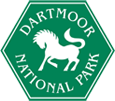Question 1: What are Dartmoor’s mires and why are they so important?
The Hound of the Baskervilles
Distribute copies of Resource 1 (PDF) and explain to the students that what they are about to read together is a description of a mire taken from a very famous novel about the fictional detective Sherlock Holmes called 'The Hound of the Baskervilles' written by Arthur Conan Doyle and published in 1902.
- Have the students heard about Sherlock Holmes?
- What does a detective do?
Read through the extract several times with the students ensuring understanding of key vocabulary particularly that is used to describe the features, smells, textures of the mire along with the emotions of those who were experiencing trying to walk across it.
Ask the students to think about what kind of place is being written about in the extract.
- Have they have ever experienced places like it?
- What is a ‘bog’ and a ‘quagmire’?
In his book Conan Doyle called this place Grimpen Mire but he was in fact writing about a real place called Foxtor Mires on Dartmoor which he had visited – he just changed its name.
Foxtor Mires
In Resource 2 (PDF) there is an Ordnance Survey map extract of Foxtor Mires. Divide the students into pairs and provide each with a copy to examine.
- What additional clues are there here to suggest what kind of place a mire is?
- What do the blue symbols at the centre of the mires on the map mean? Use the key on an Ordnance Survey map.
- How many rivers are flowing into Foxtor Mires?
Students should be helped to reach the conclusion that Foxtor Mires is in a hollow or valley between two hills into which four rivers flow making it a very marshy and boggy place.
Now return to the map in Resource 2 and ask the students to see if there are any clues suggesting what the soil might be like in the area of Foxtor Mires? What does the word ‘peat’ mean, as in the name 'Peat Cot' on the map?
Peat is a damp, dark soil that is made of organic matter such as plants, mosses and even trees that hasn’t decayed properly. Over millions of years it can build up to become many metres deep.
For information a cairn is a pile of stones of prehistoric origin (so before the Roman occupation of Britain) that formed a monument, tombstone or perhaps a landmark to guide travellers crossing the area. Similarly a cairn cross is a cross made of stone and a cairn circle a stone circle and a cist (pronounced ‘kist’) a granite lined coffin dug into the peat topped with a horizontal slab of the same rock.
Before moving on show the students the film of someone walking across Foxtor Mires (a very dangerous thing to attempt if you do not have a detailed knowledge of the place).
What lives there?
Now we are in a position to sum up what a mire is based on all of the information looked at - water-logged marshy and boggy areas of deep peat that have formed in hollows or valleys on Dartmoor.
For plants and animals mires are very challenging habitats or natural homes in which to live because the peat soils are very acidic (have a pH below 7), waterlogged (filled or soaked with water) and lacking in nutrients such as nitrogen. As a result any flora (plants) and fauna (animals) that live in mires have to be adapted or particularly suited to survive in such conditions.
Distribute copies of six plants and animals that are commonly found in the mires of Dartmoor in Resource 3 (PDF). Divide the students into pairs and encourage each to speculate about how each is adapted or particularly suited to living in mires.
- Snipe: a long and slender bill to find insects in the peat below the surface.
- Sundew: a plant that makes up for there being few nutrients in the peat soil by finding the nourishment it needs by capturing insects
- Sphagnum: a moss which is able to hold up to ten times its own weight in water.
- Devil’s-bit Scabious: a plant that grows especially well in mires as it prefers acid conditions. It is also the main food plant of the caterpillar of the very rare Marsh Fritillary butterfly.
- Cotton grass; actually a sedge rather than a grass which forms raised hummocks or tussocks on which to grow that are drier than the surrounding mire.
Next show the students the short film 'Magnificent Mires' produced by Devon Wildlife Trust. The narrator says about the mires ‘that you must be tough and remarkable to live here’. In addition to the five species that the students have already considered how many others are shown in the film living in the mire habitat?
Further detail about Dartmoor’s bogs and mires, and their relationship to other types of wetland habitat together with associated species and some of the challenges of managing these environments can be found in our bogs and wetlands factsheet.
